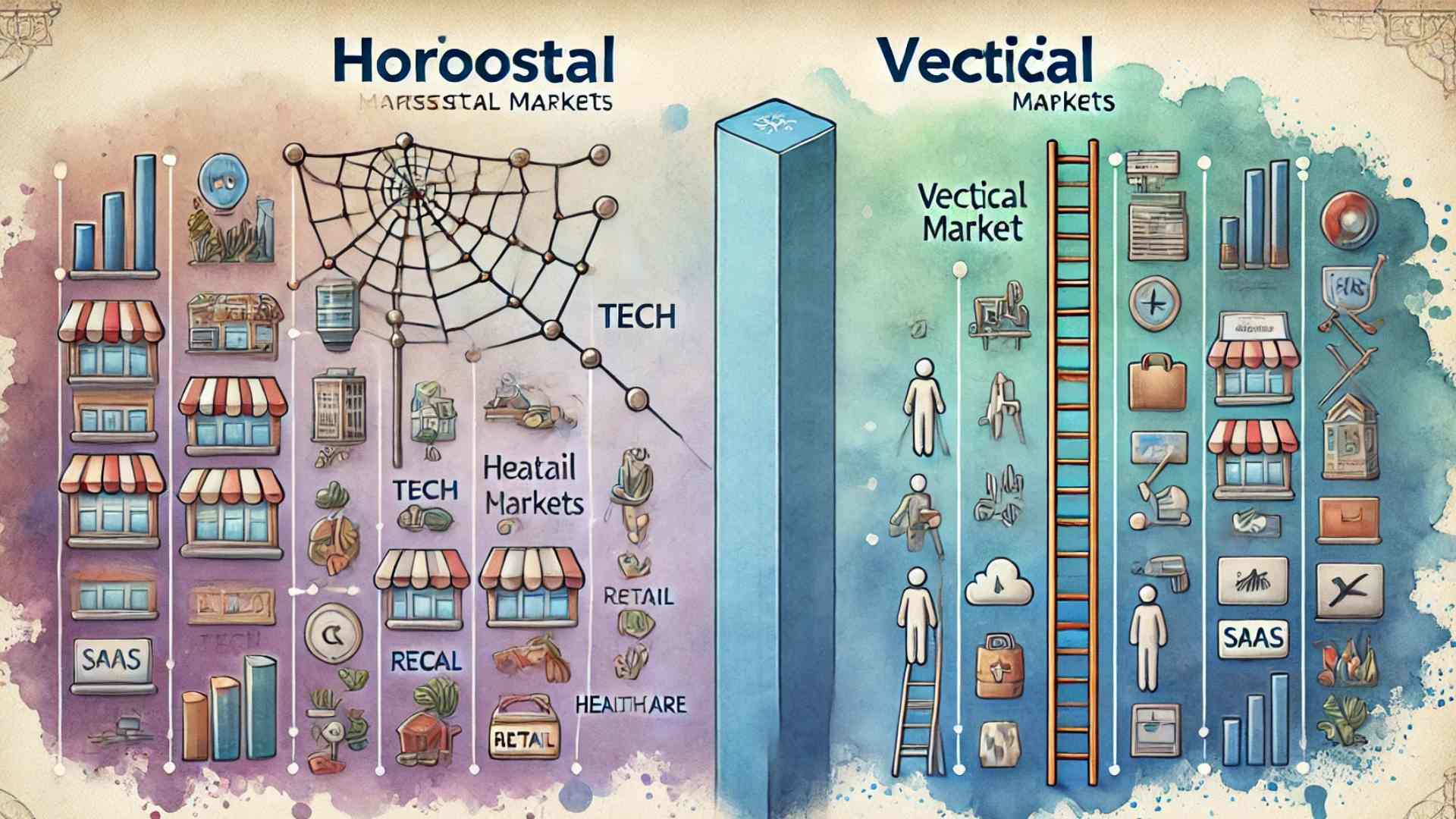
When it comes to scaling a SaaS startup, one of the first strategic decisions you’ll need to make is whether to focus on a horizontal or vertical market. Understanding the differences between these two approaches can have a significant impact on your product development, go-to-market (GTM) strategy, and overall growth trajectory.

But what exactly do we mean by "horizontal" and "vertical" markets? Let's break it down in a way that's easy to digest, especially if you’re navigating the complexities of growing a SaaS business.
Understanding Horizontal Markets
A horizontal market refers to a strategy where your product or service caters to a broad range of industries. Think of it as casting a wide net—you’re creating a solution that can be adapted by many different types of businesses across various sectors.
Example: Notion—a tool that serves as a note-taking app, task manager, and collaboration platform—can be used by almost any type of company. Whether you’re in marketing, engineering, or education, Notion offers value. It’s a classic horizontal SaaS tool because it provides versatile features that appeal to a broad customer base.
Key Characteristics of Horizontal Markets:
- Large Total Addressable Market (TAM): A product that can be used by many different types of customers.
- Scalability: One product that scales across multiple industries.
- GTM Strategy: Focused on mass-market appeal, often driven by product-led growth (PLG).
Understanding Vertical Markets
On the flip side, a vertical market strategy is much more focused. Here, your product or service is designed to solve specific problems for a particular industry. The aim is to become the go-to solution for that niche.
Example: Clio—a legal practice management software—is tailored specifically for law firms. It addresses the unique needs of the legal profession, like case management, billing, and legal document automation. By focusing on this niche, Clio has become the industry leader in legal tech.
Key Characteristics of Vertical Markets:
- Targeted TAM: The market size is limited to a specific industry or demographic.
- Deep Domain Expertise: The product development is heavily influenced by the specific needs of the targeted industry.
- GTM Strategy: Typically involves a high-touch sales process with specialized marketing efforts.
Comparing the Two Approaches
Now that we’ve defined horizontal and vertical markets, let’s compare how these approaches play out in a SaaS context, particularly when it comes to challenges like resource allocation, customer acquisition, and scaling.
Resource Allocation
| Horizontal Startups | Vertical Startups |
| Challenge: GTM resource constraints. Your product may appeal to a wide audience, but without a huge budget, reaching all potential customers can be overwhelming. It’s crucial to focus your initial efforts on a smaller, more manageable segment.
|
Challenge: Product resource constraints. You need to build a product that perfectly fits the needs of your chosen industry. But building all the features at once is often impractical due to limited resources. |
| Solution: Start with a niche within your horizontal market. For example, if your SaaS tool is useful for all small businesses, begin by targeting tech startups specifically. As you gain traction, gradually expand to other segments. | Solution: Start with a core product that solves the most critical pain points of your target industry. For instance, if you’re building software for financial advisors, begin with a basic CRM system before adding more specialized features like portfolio management or tax planning tools. |
Customer Acquisition
| Horizontal Startups | Vertical Startups |
|
Challenge: Diverse customer segments mean diverse messaging. What resonates with a tech startup might not work for a retail company.
|
Challenge: A more limited pool of potential customers means each acquisition is critical. |
|
Solution: Develop tailored messaging and GTM motions for each customer segment as you expand. Initially, this might involve creating targeted landing pages, case studies, and email campaigns that speak directly to the needs of specific industries. |
Solution: Leverage domain expertise and deep customer knowledge to create highly personalized sales and marketing efforts. Attend industry-specific events, build strong referral networks within your niche, and consider partnerships with industry influencers to accelerate customer acquisition. |
Scaling
| Horizontal Startups | Vertical Startups |
|
|
|
|
Choosing the Right Path for Your SaaS Startup
Deciding whether to pursue a horizontal or vertical market strategy depends on several factors, including your product’s potential use cases, the size of your team, and your long-term vision.
| When to Go Horizontal: | When to Go Vertical: |
|
|
Align your Startup with the Market
Both horizontal and vertical market strategies have their own merits and challenges. For SaaS startups, the key is to align your market approach with your product capabilities and resources. Start small, whether that means focusing on a niche within a horizontal market or zeroing in on a particular industry.
As you grow, expand your product and market reach in a way that stays true to your company’s vision. By carefully considering these factors, your SaaS startup can navigate the complexities of market selection and position itself for long-term success.
Startup Hub